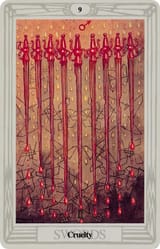Search Results
!!P38zFLDUYUh/x/40730419#40730785
7/15/2025, 9:41:06 PM
>>40730776
Torture and Mutilation in Shangri-La
In the Dalai Lama’s Tibet, torture and mutilation—including eye gouging, the pulling out of tongues, hamstringing, and amputation of arms and legs—were favored punishments inflicted upon thieves, runaway serfs, and other “criminals.” Journeying through Tibet in the 1960s, Stuart and Roma Gelder interviewed a former serf, Tsereh Wang Tuei, who had stolen two sheep belonging to a monastery. For this he had both his eyes gouged out and his hand mutilated beyond use. He explains that he no longer is a Buddhist: “When a holy lama told them to blind me I thought there was no good in religion.”
Some Western visitors to Old Tibet remarked on the number of amputees to be seen. Since it was against Buddhist teachings to take human life, some offenders were severely lashed and then “left to God” in the freezing night to die. “The parallels between Tibet and medieval Europe are striking,” concludes Tom Grunfeld in his book on Tibet. Some monasteries had their own private prisons, reports Anna Louise Strong. In 1959, she visited an exhibition of torture equipment that had been used by the Tibetan overlords. There were handcuffs of all sizes, including small ones for children, and instruments for cutting off noses and ears, and breaking off hands. For gouging out eyes, there was a special stone cap with two holes in it that was pressed down over the head so that the eyes bulged out through the holes and could be more readily torn out. There were instruments for slicing off kneecaps and heels, or hamstringing legs. There were hot brands, whips, and special implements for disemboweling.
Torture and Mutilation in Shangri-La
In the Dalai Lama’s Tibet, torture and mutilation—including eye gouging, the pulling out of tongues, hamstringing, and amputation of arms and legs—were favored punishments inflicted upon thieves, runaway serfs, and other “criminals.” Journeying through Tibet in the 1960s, Stuart and Roma Gelder interviewed a former serf, Tsereh Wang Tuei, who had stolen two sheep belonging to a monastery. For this he had both his eyes gouged out and his hand mutilated beyond use. He explains that he no longer is a Buddhist: “When a holy lama told them to blind me I thought there was no good in religion.”
Some Western visitors to Old Tibet remarked on the number of amputees to be seen. Since it was against Buddhist teachings to take human life, some offenders were severely lashed and then “left to God” in the freezing night to die. “The parallels between Tibet and medieval Europe are striking,” concludes Tom Grunfeld in his book on Tibet. Some monasteries had their own private prisons, reports Anna Louise Strong. In 1959, she visited an exhibition of torture equipment that had been used by the Tibetan overlords. There were handcuffs of all sizes, including small ones for children, and instruments for cutting off noses and ears, and breaking off hands. For gouging out eyes, there was a special stone cap with two holes in it that was pressed down over the head so that the eyes bulged out through the holes and could be more readily torn out. There were instruments for slicing off kneecaps and heels, or hamstringing legs. There were hot brands, whips, and special implements for disemboweling.
Page 1
